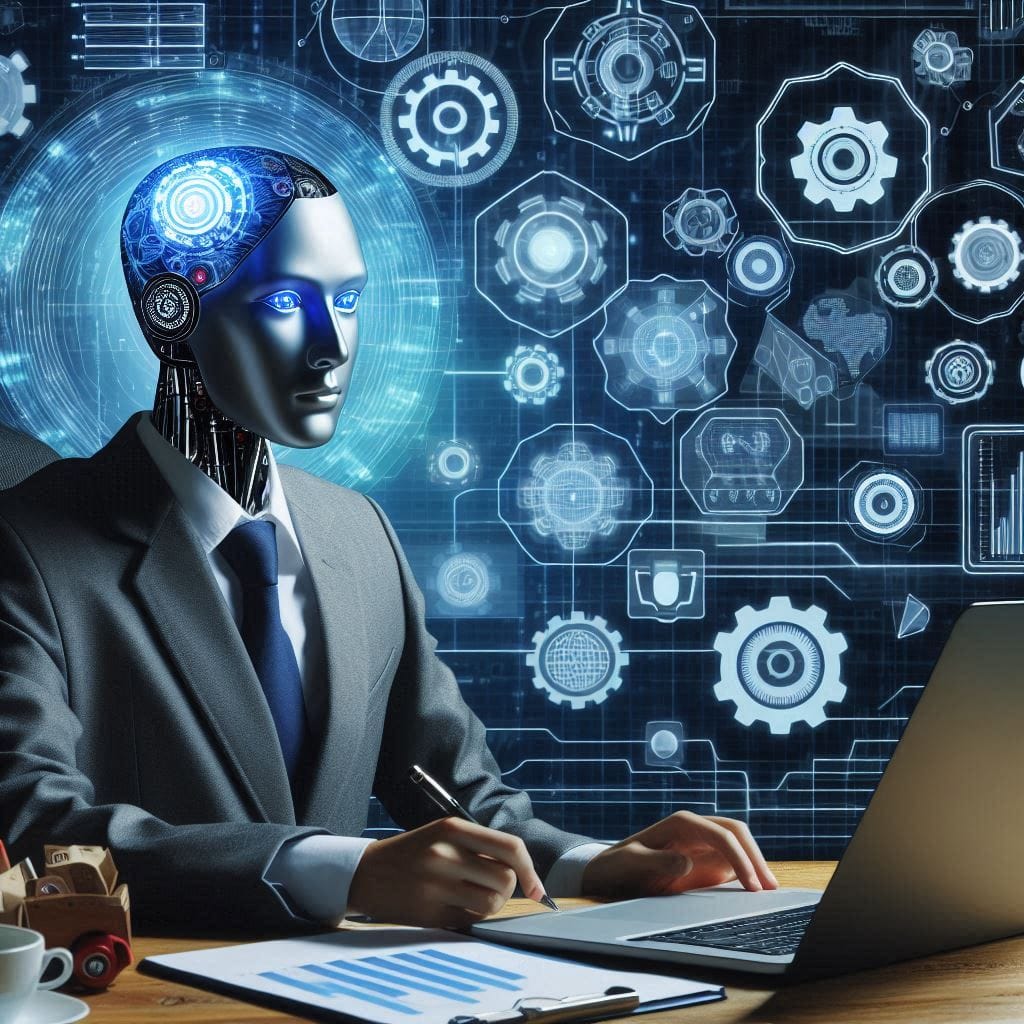
AI Workflow Automation: Transforming Business Operations
How AI is Streamlining Processes and Boosting Efficiency
In today’s fast-paced business environment, efficiency is key. AI workflow automation is revolutionizing how businesses operate by streamlining repetitive tasks and automating workflows.1 This not only saves time and resources but also improves accuracy and consistency.2
How AI Enhances Workflow Automation
AI-powered workflow automation systems leverage several key technologies to streamline processes:3
- Task Automation: AI can handle repetitive tasks such as data entry, processing invoices, and scheduling meetings.4 This frees up human employees to focus on more strategic and complex work.
- Efficiency: AI systems can work 24/7 without breaks, which means that tasks can be completed faster and more accurately.5
- Scalability: AI-powered systems can be scaled to handle increased workloads without needing to hire more staff.6 This is especially beneficial for growing businesses that need to manage increasing amounts of data and tasks.
- Reduced Human Error: Automating workflows with AI can minimize the risk of human errors.7 Because AI systems follow predefined rules and instructions, they can perform tasks more consistently and reliably than humans.
- Integration: AI systems can be integrated with existing business tools and platforms, such as CRM systems, email platforms, and project management tools.8 This allows for a seamless transition to automated workflows without disrupting the existing business structure.9
- Cost Reduction: By automating tasks and reducing the need for manual labor, businesses can significantly reduce operational costs.10 AI systems can perform tasks at a lower cost than human employees, which can lead to significant savings.

Specific AI Tools for Workflow Automation
There are a number of AI tools and platforms that can be used for workflow automation, depending on the specific needs of your business. Here are a few popular options:
- Zapier: A platform that connects different applications and automates workflows between them.11 It is considered a no-code platform that is useful for beginners.
- Make.com: Similar to Zapier, it’s a platform that allows for the creation of AI-powered automations.12
- Airtable: A platform that combines the features of a database with a spreadsheet, allowing you to build custom automations.13 It is often used with Make.com to create more complex automations.
- Voiceflow: Primarily used for creating conversational chatbots and voice agents, but can also be used in workflow automation to automate tasks that involve voice interactions.14
- Relevance AI: Useful for building AI tools and connecting them to GPTs and AI agents for use in various automations.
- Agentive: A software platform for building text-based agents for various purposes, which can include automating specific tasks.15
- Promptmetheus: Used for crafting powerful prompts, and prompt engineering is a key component of effective workflow automation.16
Examples of AI Workflow Automation in Action
AI workflow automation can be used in a variety of industries and for a wide range of tasks.17 Here are a few examples:
- Email Classification: AI can classify incoming emails into categories (e.g., opportunity, needs attention, ignore) and automatically assign tasks or generate responses.18
- Appointment Setting: AI can automate the process of booking appointments by responding to requests and checking availability.19
- Lead Qualification: AI can qualify leads by analyzing customer data and interactions and identify leads that are most likely to convert.20
- Content Repurposing: AI can transform long-form content (e.g., videos) into various formats (e.g., written posts, short-form content scripts) for different platforms, saving time and maximizing the return on investment.21
- Sales Call Analysis: AI can analyze sales call transcripts to identify key points, trends, and areas for improvement.22
- Customer Support: AI-powered chatbots can manage customer queries, answer frequently asked questions, and book appointments.23
- Internal knowledge retrieval: AI tools can be used to create internal use co-pilots that can retrieve information from company documents and databases for employees.24
struggling with manual processes? Our AI automation services can provide the solution you need
The Benefits of AI Workflow Automation
There are many benefits to implementing AI workflow automation in your business, including:
- Increased efficiency: AI can automate repetitive tasks, freeing up employees to focus on more strategic and complex work.25
- Improved accuracy: AI systems are less likely to make errors than humans, which can help to improve the accuracy of your work.26
- Reduced costs: AI systems can be more cost-effective than human labor, especially for repetitive tasks.27
- Increased productivity: AI can help employees to work more efficiently by automating tasks and providing them with the information they need to do their jobs.28
- Improved customer satisfaction: AI can help to improve customer satisfaction by providing faster and more accurate service.29
Implementing AI Workflow Automation
Implementing AI workflow automation can be a complex process, but it is definitely worth the effort. Here are a few tips for getting started:
- Start small: Start by automating a few simple tasks to get a feel for how AI can benefit your business.
- Choose the right tools: There are a number of AI tools and platforms available, so it is important to choose the right one for your specific needs.
- Get your team involved: It is important to get your team involved in the implementation of AI workflow automation. This will help to ensure that the systems are used effectively and that employees are comfortable with the changes.
- Monitor and evaluate: It is important to monitor and evaluate your AI workflow automation systems to ensure that they are working as intended and that they are continuing to benefit your business.
By implementing AI workflow automation, businesses can improve their overall performance by minimizing human effort and error and maximizing output.30

